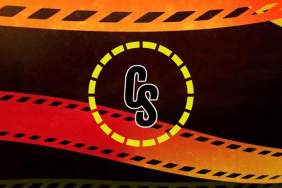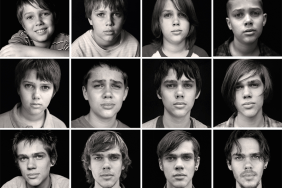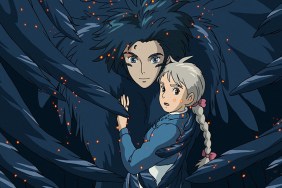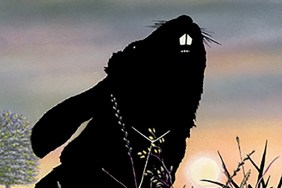
It was released almost two months ago, but I finally got around to savoring Criterion’s Blu-ray restoration of Hiroshi Inagaki‘s The Samurai Trilogy over the last couple of weeks. I’ve made mention of it in a few posts here and there, but i wanted to make a special point to give it it’s own space considering the massive upgrade we are talking about here over the previously released 2004 DVD editions.
I can’t remember how long ago it was that I bought the DVD editions, but I bought them blind without having seen any of the three films — Musashi Miyamoto (winner of the 1955 Best Foreign Language Oscar), Duel at Ichijoji Temple and Duel at Ganryu Island — but watching them those years ago I remember enjoying the films, but not at all moved by the imagery. The DVD presentations were hardly impressive and Criterion’s packaging doesn’t suggest they were remastered in any way. Thankfully with these high-definition re-releases all is fixed.
Gone are the scratches and greenish hue that muddied the image and made what are actually three rather beautiful films quite ugly. Watching this time around it struck me that had Michael Powell and Emeric Pressburger (The Red Shoes and Black Narcissus) collaborated on a samurai feature it may have actually looked something like this. The use of color (though not as dramatically effective) by cinematographers Jun Yasumoto (Samurai I and II) and Kazuo Yamada (Samurai III) and the balance of wide spaces versus occasional studio settings gives a sense of being a studio feature from the late ’40s to the ’50s. This, as opposed to the samurai films most of us think of from the likes of Akira Kurosawa, Kihachi Okamoto, Hideo Gosha and Masaki Kobayashi. I say this, however, recognizing I’m certainly not to be considered an authority on the genre.
In terms of the visual style, Inagaki presents the film in a 1.33:1 aspect ratio rather than a widescreen format. The images therefore explore depth rather than the sprawling nature of a widescreen presentation. Considering we aren’t talking about massive field battles as seen in Kurosawa’s Ran or Kagemusha, the aspect ratio doesn’t detract from the experience and in one instance a massive crane shot toward the end of Duel at Ichijoji Temple, rising from ground level to above the battle, is one of the most impressive in the three films.
The third film, with Yamada stepping in for Yasumoto as DP, enjoys most of its visual flourishes in the latter moments during the titular beachside duel (of which you’ll catch a reference at the end of Quentin Tarantino’s Kill Bill: Volume Two). In this HD presentation it is truly stunning as the sun sets on an epic battle, that, if I’m not mistaken, offers the largest amount of onscreen blood you’ll see in the entire feature and it couldn’t be more than a couple of drops.
Finally, in terms of the film’s greatness, I can’t go without mentioning two performances. The first, and obvious, is that of Toshiro Mifune, a star for the ages. Mifune saw the release of both Musashi Miyomoto and Seven Samurai in the same year (1954). While both present wildly different characters — Mifune’s Kikuchiyo in Seven Samurai only remotely resembling his titular Musashi in the opening moments when he’s known as the brash Takezo — the actor’s presence is immediately felt. Be it his calm existence and spiritual search in The Samurai Trilogy or his childish buffoonery in Samurai, his smile and eccentricities will capture your attention as quickly as his domineering demeanor and self-loathing. Topping it off, cast opposite him so perfectly is Koji Tsuruta as his rival (not to be confused with enemy), Kojiro Sasaki.
Tsuruta’s facial features are described in Stephen Prince’s included essay that comes with Criterion’s two-disc package as “feline”, an apt description for his soft appearance contrasted by his quietly intense gaze. Upon his initial arrival his character’s respect for Musashi is evident. He respects the way of the samurai and doesn’t dare interfere even in instances where Musashi could use his assistance. Musashi’s continued victories impress him even more, giving him something to strive to.
Yet, within Sasaki, there is also a little of the arrogance originally found in Takezo before he embarks on his journey at the behest of several priests, in search of a spiritual center and understanding where his strength truly comes from. There are tiny differences in the two warriors and it’s their subtlety that makes their conflict so dynamic.
This Blu-ray set is still lacking in features, though it does include an impressive 24-page booklet and a three-part featurette in which historian William Scott Wilson discusses the real-life Musashi Miyamoto and Eiji Yoshikawa‘s novel that inspired not only Inagaki’s film, but Hideji Hôjô‘s play. It’s of a mild interest, but I would have preferred to see more on Inagaki and his relationship with Mifune, after all Mifune is credited as working alongside Inagaki 21 times compared to the 16 films he made with Kurosawa. I would have also liked to see a featurette exploring the restoration because, as I said, it is immaculate.

Just above is a comparative look at two screen captures from the film, the one on the left is from Criterion’s 2004 DVD compared to the Blu-ray capture on the right. The difference is remarkable throughout all three films. I will say, however, there are a few times I noticed a slight flickering of color, particularly in the early stages of Samurai II. It was noticeable, but not consistent and my assumption is there is very little they could have done to fix it.
In all, I can’t speak highly enough of this collection. It is available on both [amazon asin=”B007N5YK10″ text=”DVD”] and [amazon asin=”B007N5YJZM” text=”Blu-ray”], the latter priced at $48.95 at Amazon as of the posting of this review. My suggestion, if you’re any kind of samurai film fan, is to pick this up now. It’s well worth it.









